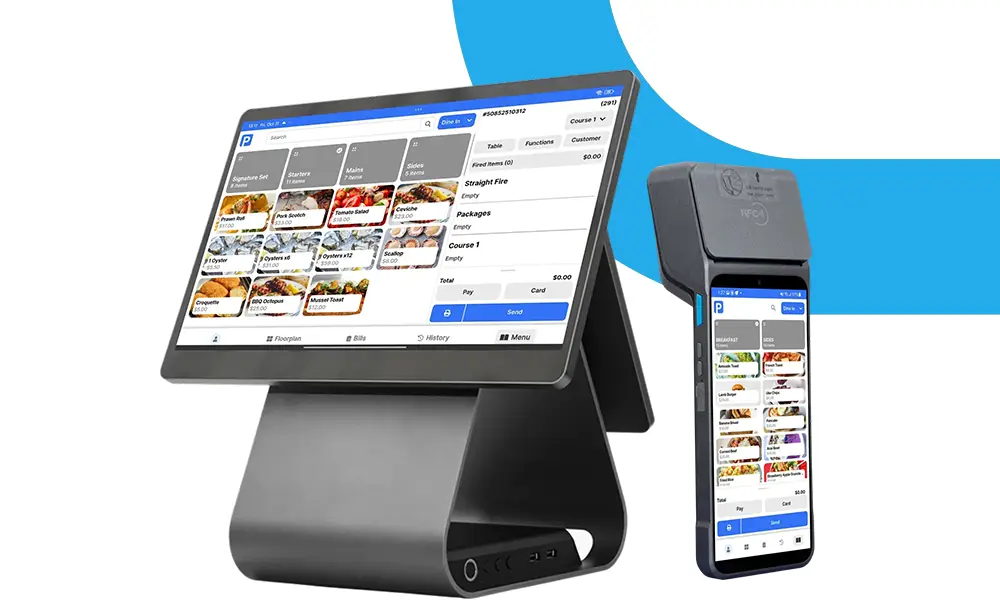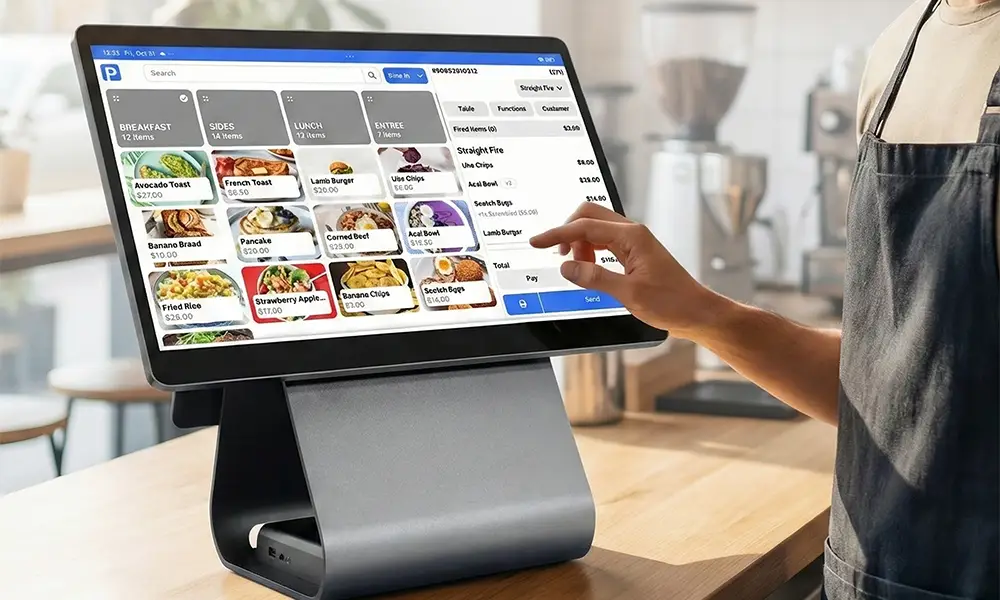Is your POS system slow? If you're running a busy retail store, café, or restaurant, the last thing you need is a sluggish point-of-sale system slowing down your operations. Every second counts, and when your system is slow, it impacts the customer experience, employee productivity, and, ultimately, your business profits.
Many businesses still struggle with outdated POS systems that simply can’t keep up with modern demands. With customer expectations higher than ever, you need a solution that delivers speed and efficiency. Luckily, 2025 brings new features designed specifically for speeding up POS systems, allowing businesses to handle transactions faster, improve workflows, and deliver an exceptional customer experience.
If you’re looking for a solution to speed up your POS system, Payflo offers an affordable, efficient solution tailored to your needs. Find out more on our website.
In this blog, we will explore the 2025 advancements in POS technology, how these features can accelerate your business operations, and how you can implement them in your own systems.
Why Speeding Up POS Systems Matters
Before we dive into the specific features that can help, let’s first understand why speeding up POS systems is crucial for your business.
Reducing Wait Times
Long waits during checkouts frustrate customers. In fast-paced environments like cafes or retail stores, even a few seconds of delay can lead to long queues and customer dissatisfaction. With faster POS systems, you can process payments quickly, reducing wait times and improving the overall customer experience.
Improving Staff Efficiency
A slow POS system means your staff has to spend more time entering orders, processing payments, and dealing with technical issues. In high-volume environments, this can add up and create significant delays. Streamlining your POS system speeds up workflows, allowing your staff to focus on delivering excellent service rather than dealing with a slow system.
Increased Transaction Volume
With faster POS systems, businesses can process more transactions in less time. This is particularly important during peak hours when every second counts. Whether you’re serving a packed restaurant or a busy retail store, speeding up POS systems can help you process more sales, increase revenue, and provide better customer service.
New Features in 2025 for Speeding Up POS Systems
In 2025, POS systems have evolved significantly. The new features on the market today are designed to solve the most common problems businesses face with slow POS systems. Let’s look at the latest innovations you should consider to speed up your operations.
1. Cloud-Based POS Systems
Traditional, on-premise POS systems often suffer from speed issues due to outdated hardware or limited storage. Cloud-based POS systems are becoming the new standard because they allow businesses to access their data over the Internet, bypassing hardware limitations.
By moving your POS to the cloud, your system can operate faster and more efficiently. Updates are done automatically, and you don’t have to worry about server issues or downtime. Cloud systems can handle more transactions simultaneously, offering real-time updates and allowing your staff to access information quickly from any device.
2. Mobile POS Solutions
For businesses that need flexibility and speed, mobile POS systems are a game-changer. Using tablets or smartphones as POS terminals allows you to process payments at the customer’s table or anywhere in the store. This means customers don’t have to wait in line to pay, and your staff can quickly take payments and even print receipts on the go.
In 2025, mobile POS systems are more reliable and integrated with advanced payment solutions. With options like Payflo Go, businesses can make transactions faster and manage customer interactions seamlessly.
3. Integrated Payment Processing
One major cause of slow POS systems is the disconnection between POS software and payment processing hardware. In the past, these systems were often separate, meaning you had to manually enter data or deal with multiple devices. Now, integrated payment solutions mean that everything is linked, reducing delays in transactions and the chances of errors.
Many modern POS systems, including Payflo, offer EFTPOS solutions integrated directly into the POS software, allowing for faster payment processing and reduced transaction time.
4. AI-Powered Features for Faster Decision Making
Artificial intelligence (AI) is increasingly being integrated into POS systems to help businesses make quicker, data-driven decisions. AI can be used to automatically adjust pricing, inventory levels, or even recommend upsell opportunities. This technology speeds up the decision-making process, allowing businesses to respond to customer needs in real-time.
For instance, AI can help identify high-demand products and ensure they are always in stock, reducing the time spent manually monitoring inventory. By speeding up decision-making, AI helps businesses save time, improve workflows, and increase operational efficiency.
5. Contactless Payments
The shift towards contactless payments continues to accelerate in 2025, and for good reason. These systems enable customers to pay in a matter of seconds without swiping or inserting their cards. Whether you’re using NFC payments (Near Field Communication) or mobile wallets like Apple Pay or Google Pay, contactless payments reduce the time it takes to process transactions, allowing for faster service.
With the growing adoption of contactless technology, customers expect to pay in seconds. By offering contactless payment options, you not only speed up the transaction process but also enhance the overall customer experience.
6. Faster Hardware
While software is crucial for speeding up POS systems, hardware also plays a significant role. In 2025, many POS providers are upgrading their terminals with faster, more reliable hardware. Modern POS terminals feature advanced processors, larger screens, and high-speed printers, allowing transactions to be processed in seconds.
These hardware improvements make a big difference in overall performance. For example, Payflo Pro offers a 15.6" HD touchscreen and fast processor, ensuring your transactions are completed swiftly and smoothly.
How to Implement These Features in Your Business
Now that you know the top features for speeding up POS systems in 2025, how do you implement them in your business? Here are some steps to take:
Step 1: Evaluate Your Current POS System
Look at your existing POS system and determine where it’s falling short. Are you experiencing slow transaction times? Is your system having trouble handling large volumes of sales? Identifying the pain points in your current system will help you decide which new features you need.
Step 2: Choose a Scalable System
When upgrading your POS system, make sure you choose a scalable solution that can grow with your business. Payflo offers scalable plans that start from basic systems for small businesses to more advanced features for larger operations.
Step 3: Train Your Team
No matter how fast your POS system is, your team needs to be trained to use it efficiently. Proper training ensures that your staff can handle transactions quickly and avoid mistakes that can slow down service.
Step 4: Integrate with Your Existing Systems
Make sure your new POS system integrates seamlessly with your current hardware and software. If you’re upgrading to a cloud-based POS, ensure it works well with your inventory system, accounting software, and customer management tools.
Conclusion
Speeding up your POS system in 2025 is no longer a luxury; it’s a necessity. With cloud-based solutions, mobile POS options, and AI-powered features, you can ensure that your business stays competitive by offering fast, efficient service to your customers.
Are you ready to speed up your business operations? Explore Payflo’s POS solutions to find the perfect system that meets your needs. Visit our website and get started today with a demo.
FAQs
1. What features can speed up my POS system in 2025?
Cloud-based POS systems, mobile POS solutions, integrated payment processing, AI features, and contactless payments can all help speed up your POS system by reducing transaction times and improving workflows.
2. How does a cloud-based POS system improve speed?
Cloud-based POS systems provide faster access to data, automatic updates, and real-time transaction processing, which reduces downtime and speeds up transaction times.
3. Can mobile POS systems really make a difference in speed?
Yes, mobile POS systems allow businesses to process payments and manage orders on the go, reducing wait times and increasing efficiency by processing transactions directly at the point of service.
4. Are contactless payments faster than traditional methods?
Yes, contactless payments are much faster, allowing customers to pay with a tap, eliminating the need to swipe or insert a card. This reduces transaction times and speeds up the checkout process.
5. How do I choose the right POS system for my business?
To choose the right POS system, evaluate your business needs, consider features like speed, scalability, and integration with your existing tools, and ensure that the system supports fast transaction processing.


%201.svg)
%201.svg)





.png)
.png)
